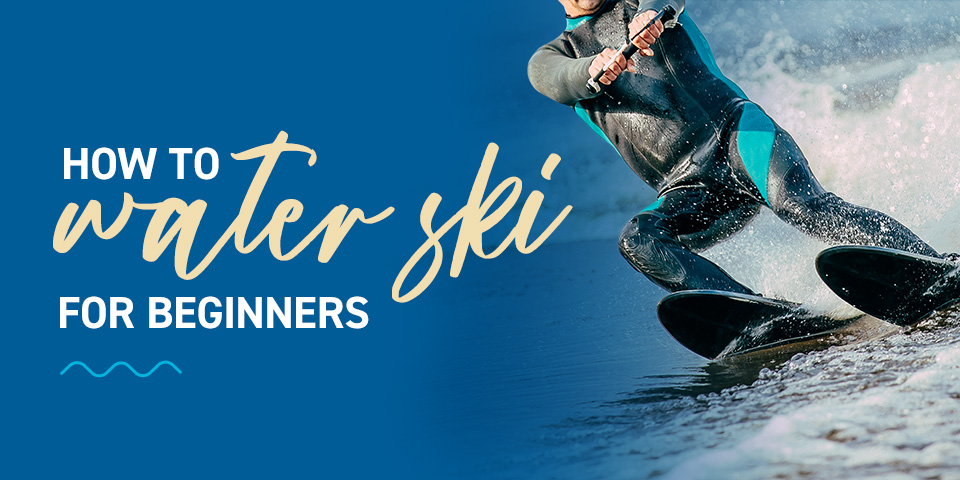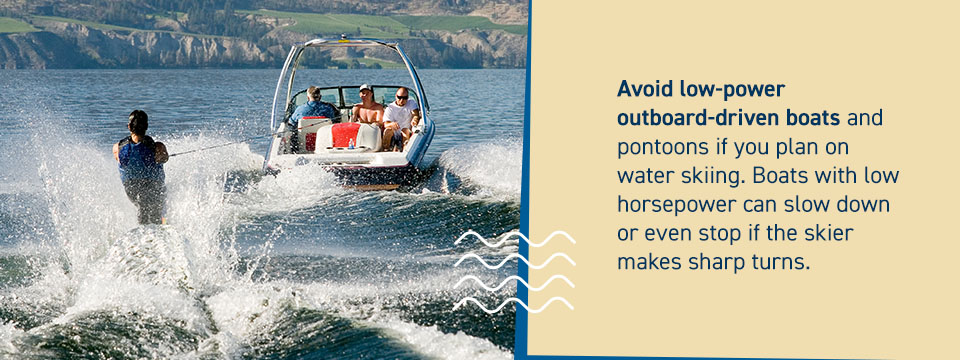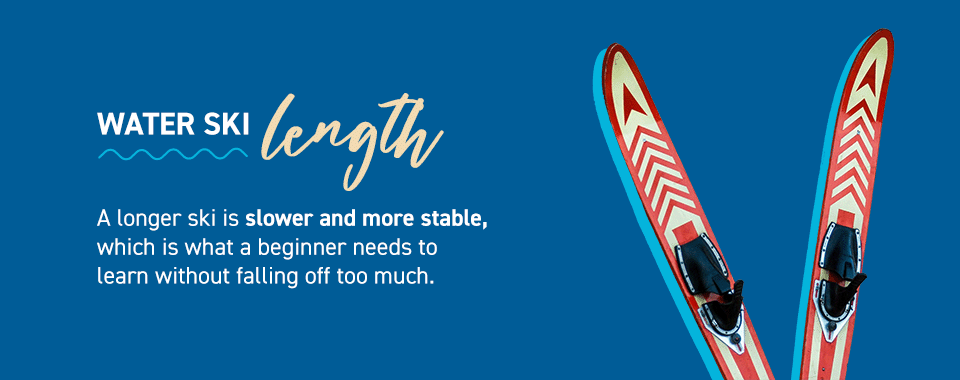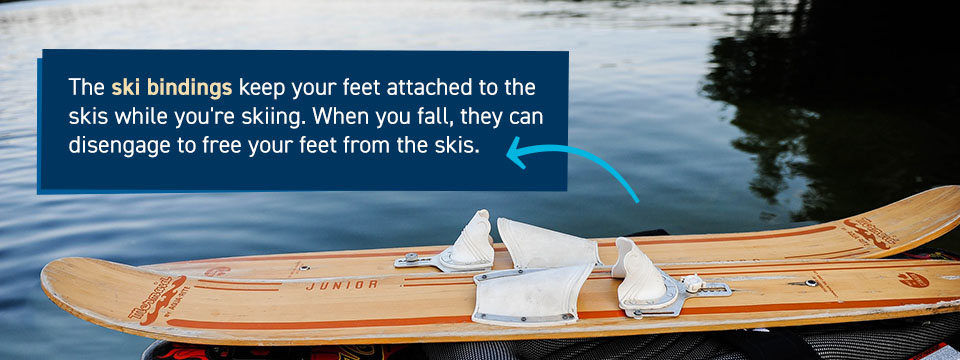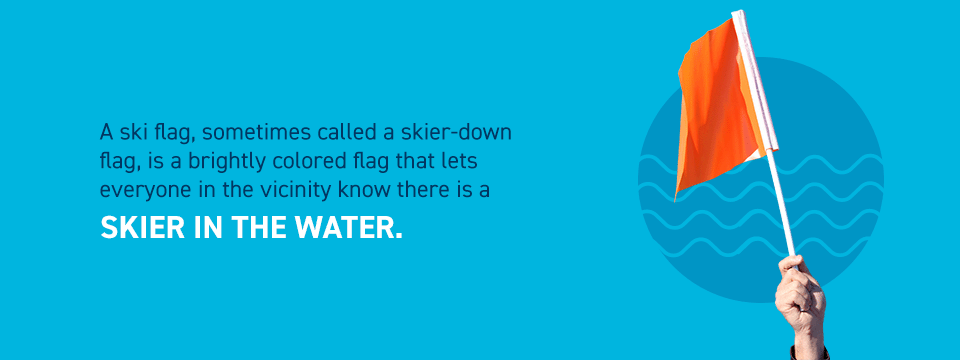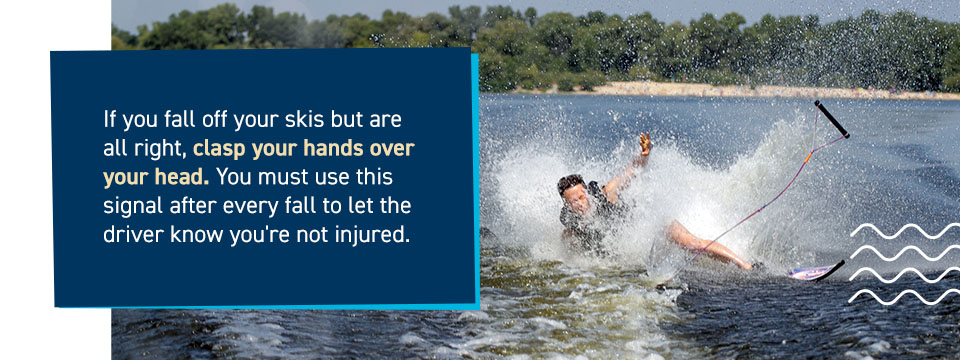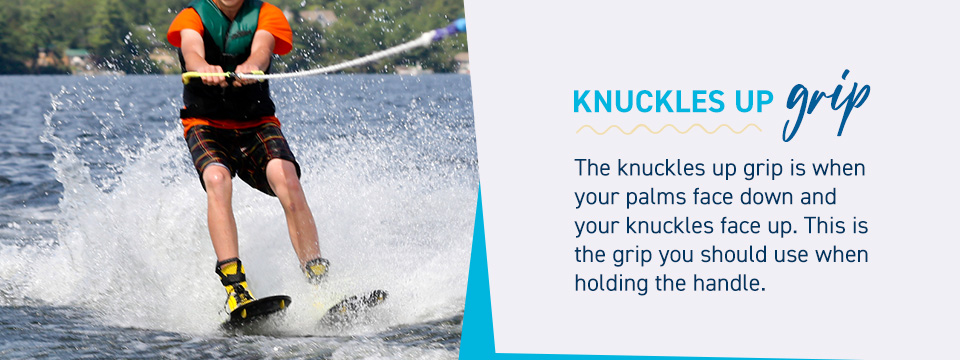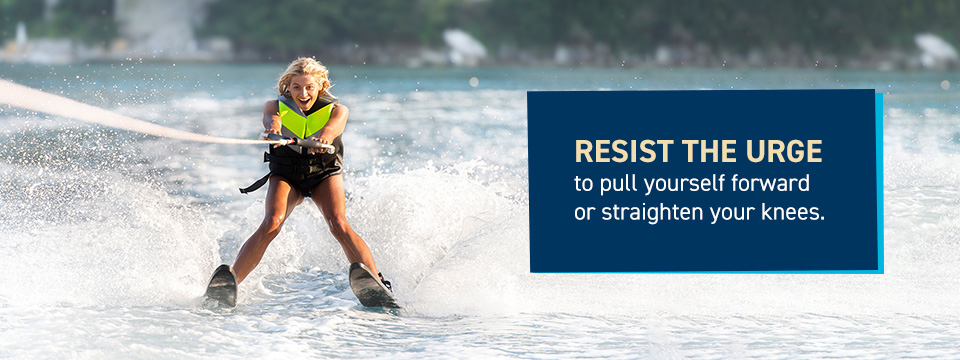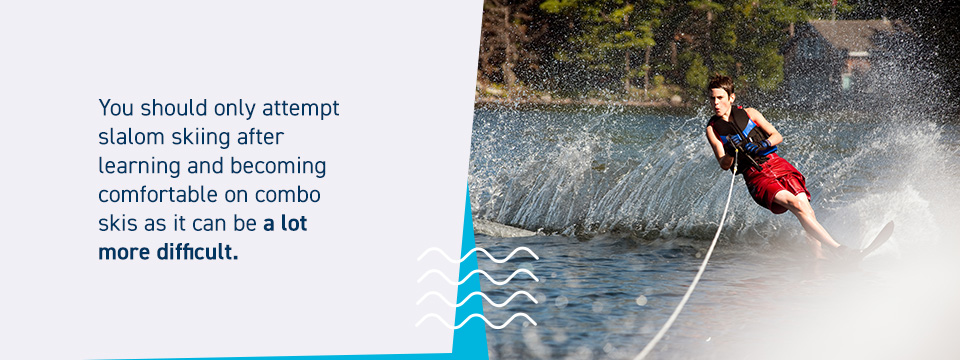Filters
How to Water Ski for Beginners
Water skiing is an exciting water sport you can enjoy both recreationally and competitively. It involves standing up on skis as a boat tows you through the water. You can glide, plane, jump and perform stunts after enough practice.
The first time you see a water ski show or someone gliding effortlessly on the water, you may wonder what it would be like to do it yourself. Fortunately, with a little preparation and guidance, you can be water skiing in no time. This guide will help you stay safe and have fun while water skiing.
Best Boats for Water Skiing
You can ski behind almost any boat, but certain boats are better for beginners. When you’re just starting, you don’t want to make learning more difficult. Using an appropriate boat will make a big difference.
The best type of boat for water skiing is a tournament inboard direct drive boat. They have equal weight distribution and an engine in the middle. These boats are designed to create flatter wakes, making it easier to ski behind them. Multi-sport boats are also good for water skiing and other water sports. However, any V-hull boat with enough power can be used successfully. The boat should be able to reach at least 20 to 25 miles per hour and have at least 70 horsepower. Boats with at least 150 horsepower are recommended for sports like wakeboarding and water skiing.
Avoid low-power outboard-driven boats and pontoons if you plan on water skiing. Boats with low horsepower can slow down or even stop if the skier makes sharp turns. Boats with an engine under 50 horsepower are better suited for slow tubing or kneeboarding.
Water Skiing Equipment
To water ski, you need the right gear. There are a lot of choices out there, so it’s important to know where to start. The main equipment you need to water ski are the skis themselves, ski bindings and a skiing rope.
1. Water Skis
Most skiers start with combo skis, which are sold as a pair. One ski has two bindings, and the other has one binding. This setup allows you to start with two skis and then go to one ski as you get more advanced. Combination skis are wider in the front and have a large surface area, making them more stable and better for beginners. Some beginner skis can come with trainer bars that connect the skis, making it even easier to get started. Combo skis generally sell for a few hundred dollars. As with most sporting equipment, it’s usually best to buy the best pair you can afford. Higher-quality skis will last longer.
Water Ski Length
Combo water skis range in size from around 59 to 68 inches long. Other skis can be up to 72 inches. The size you should choose depends on your body weight and ability level. A longer ski is slower and more stable, which is what a beginner needs to learn without falling off too much. For example, a 130-pound skier should opt for 65- or 66-inch skis, while a 170-pound skier should opt for 69-inch skis. However, skiers who can go faster should opt for the shortest skis they can handle.
Water Ski Fins
Most water skis have fins on the bottoms that make turning easier. When you’re a beginner, this won’t matter very much. If you’re skiing competitively, however, the location and depth of the fin can significantly affect performance. In both cases, the fins eventually wear out. You can find replacement fins online.
2. Ski Bindings
The ski bindings keep your feet attached to the skis while you’re skiing. When you fall, they can disengage to free your feet from the skis. The best water ski bindings can cost as much as the skis themselves. However, combo skis usually come with attached bindings.
3. Water Skiing Rope
The water skiing rope is what you hold on to and attach to the towing boat. It should be specifically designed for water skiing and slightly stretchy so it can reduce shock to your arms as the boat changes speed. The rope should be around 75 feet long. There are a few different handle styles to choose from. Beginners should use a handle with a long vee, while experienced skiers can use a short vee handle that gives a more consistent pull.
Water Skiing Protective Equipment
Like with other sports, you need to take protective measures to ensure safety for the skiers and those around them. Adequate protection includes always wearing a floatation device and having a ski flag onboard the boat.
1. Personal Floatation Device
There are several types of personal floatation devices (PFDs). Type I PFDs are life jackets designed for rough or remote waters. They are the most buoyant and can turn an unconscious person face-up and are bulkier than other types. Type II PFDs are near-shore vests used in calm waters. They’re very buoyant but may not turn an unconscious person face-up. Type III PFDs are floatation aids that will not usually turn an unconscious person face-up but are adequate for keeping someone afloat until they are rescued.
Type III PFDs are often used for water sports like water skiing. They are perfect for calm waters and when assistance is nearby. If you fall off your skis, the observer will notice, and the person driving the boat can stop to help you. Some Type III PFDs won’t inflate until you are submerged in water.
2. Ski Flag
A ski flag, sometimes called a skier-down flag, is a brightly colored flag that lets everyone in the vicinity know there is a skier in the water. It is usually required to be red or orange and at least 12 inches by 12 inches. Certain states may have special requirements for the color or size of the flag. Whenever the skier is in the water but not skiing, the observer should hold up the flag so everyone knows someone is down in the water. Other vessels will then know not to operate within at least 50 yards of a displayed flag.
Water Skiing Signals
You should learn several signals to communicate with the boat driver effectively. For these signals to work, there should be an observer onboard. The driver has to face forward to drive the boat, so there should be someone else on board to watch the skier. For experienced skiers in a pinch, an attentive driver with a ski mirror is adequate.
- Thumbs-up: This signal tells the driver to speed up.
- Thumbs-down: Use this hand signal to tell the driver to slow down.
- Index finger to thumb: Use the OK hand signal when the speed is right.
- Point your finger in the air, make a circular motion and then point: You can use this signal to indicate to the driver which direction you want to go. The driver can also use this motion to warn the skier of an upcoming turn.
- Pat your head: This tells the driver you want to return to the dock.
- Flat hand out: Use this when you want to driver to stop.
- Slashing motion at your neck: Use this signal to tell the driver to stop immediately. Use this for any emergency.
- Clasp your hands over your head: If you fall off your skis but are all right, use this signal. You must use this signal after every fall to let the driver know you’re not injured.
Tying the Rope
Securing the rope well is a simple but crucial step. Incorrectly tying off the rope can lead to injury and make it harder to stay in tow. A simple knot is not enough! The way you secure the rope also depends on the attachment options on the boat. Whenever possible, use the designated tow bar.
Even if you’re already familiar with tying off ropes, you might want a quick refresher. Otherwise, you may want to ask someone to assist you the first few times. Videos online can help you become more familiar with tying ropes off securely.
How to Put on the Skis
Sit on the dock or on the side of the boat to put your water skis on. You can put the skis on bare feet or wear water socks. Adjust the bindings for your foot size so they are slightly tight. You don’t want your feet to slide out while you’re on the water. You may need to get the skis wet to slide them on easier.
Proper Grip and Posture
Water skiing is all about balance and maintaining proper form. If you maintain proper form, the boat will be doing most of the work for you. You shouldn’t feel like you are lifting yourself up.
1. Knuckles up Grip
The knuckles up grip is when your palms face down and your knuckles face up. This is the grip you should use when holding the handle. If you have trouble holding on, waterskiing gloves can improve your grip.
2. Basic Positions
Perform the cannonball position by getting into a seated position where your knees are close together and at chest level. As you grip the handle, your arms should be on the outside of your knees and the rope between the skis. Arms should be straight. Practice on dry land first and have a friend pull on the rope. This will give you a feeling of what it will be like when the boat pulls you up. Make sure your knees stay together at all times.
You’ll use the chair position between the cannonball position and standing up on your skis. Your legs will form a 90-degree angle, like when you sit on a chair. Your arms should be outstretched in front of you, holding onto the handle, and your back should be straight. Remain in this position until you are comfortable and can bring your hips underneath your shoulders.
While continuing to ski, your shoulders should be squared and facing front. Keep your head up and lean back slightly. Your arms should remain straight and outstretched.
Deep Water Start vs. Dock Start
The first thing to learn is how to get up on water skis. You can start one of two ways — on the dock or in the water. Deep water starts are more common and easier when you are a beginner.
1. Starting in the Water
After gearing up and getting in the water, assume the cannonball position. Your skis should be in front of you pointing up, and the rope should be between them. Make sure you use the knuckles up grip and that the rope is tight. Lean back slightly, then signal the driver to start. As the boat pulls you along, you should feel yourself getting pulled up. This is how you transition to the chair position. Remain in the chair position until you feel comfortable enough to stand up the rest of the way, but keep your knees bent.
2. Starting on the Dock
You can only start from the dock if it’s close to the water’s surface. You can sit on the dock’s edge with your legs in a similar position as the cannonball position with ski tips up. Keep your arms partially bent at first to absorb the shock from the initial take-off.
Maneuvering on Skis
After you get up on your skis, you’ll want to start moving around and turning. When you’re a beginner, much learning will come from trial and error. If you try to adjust too far, you will fall. But with practice, you will be able to stay up, turn and cross waves.
1. How to Stay Up
Staying up should be easy. If you’re in the proper body position, the boat will be doing all the work for you. Resist the urge to pull yourself forward or straighten your knees. Just keep your knees bent and lean backward slightly.
2. How to Turn
Steering while water skiing can be tricky. You’ll need to take the weight off the foot in the direction you want to go. So if you want to turn left, bend your right knee to relieve the weight off your left foot and lean your body to the left.
3. How to Cross the Wake
Attempting to cross the wake of the boat results in many falls for beginners. Going slowly is not an option. You will need to cross the wake swiftly and with both skis at once. Bend your knees more to absorb the shock and approach the wake at a sharp angle. Then, put pressure on the ski farthest from the wave you’re approaching until you’re over the wake. The more you practice, the easier it will be.
4. How to Jump
Once you are confident in your turning ability, you can try jumps. Start on the outside of the wake and approach it at a sharp angle. As soon as you reach it, straighten your legs to put pressure on both skis at once. As soon as you’re in the air, prepare to land. Bend your knees and make sure the ski tips aren’t facing down into the water.
Slalom Skiing
Slalom skiing is when you use only one ski. You should only attempt slalom skiing after learning and becoming comfortable on combo skis as it can be a lot more difficult.
1. Slalom Ski Size
Like with other skis, the size you choose should depend on your weight and skiing speed. The boat’s power and your experience level can also impact the best ski size. However, there are general guidelines to help you choose. For example, if you are between 135 and 160 pounds and will be skiing at 26 to 30 miles per hour, your ski should be 67 or 68 inches. If you have more experience and are comfortable at higher speeds, you could use a smaller ski of 65 or 66 inches. The heavier you are, the longer your ski should be.
2. One Ski Deep Water Start
A deep water start with just one ski is challenging. But taking what you know from skiing with two skis will help. You will need to bend the knee of your front leg until it is touching your chest, like the cannonball position. If your right foot is forward, the rope should be on the left side of the ski. Remember to let the boat pull you up and keep your shoulders square and facing forward.
3. One Ski Steering
Steer while slalom skiing by pointing the ski in the direction you want to go while leaning slightly. You will need to slowly pull the handle in toward your hips to prevent slack. Remember to keep your knees bent and your arms straight.
Frequently Asked Questions
There is a lot to learn about water skiing, so here are some frequently asked questions and their answers.
1. Is There a Way to Make Skiing Easier?
If you are having trouble staying up on your skis, try tying them together or using a trainer bar to keep your legs together and help you get used to skiing. If you are teaching a kid to ski, allow them to learn with the skis tied together first to prevent their legs from spreading too far and causing them to fall.
2. What Does the Boat Driver Need to Know?
The boat driver and observer should know the hand signals and when to use the ski flag. They need to know how to maintain the right speed and accelerate and decelerate slowly so the skier doesn’t fall. The driver also needs to keep a safe distance from the shoreline, rocks, other boats and any obstacles.
3. What Do I Do if I Know I’m Going to Fall?
If you know you’re about to fall, let go and try to fall back or to the side, which will minimize your risk of hitting a ski. Falling on a ski can hurt you more than just hitting the water. Remember to use the “I’m OK” hand signal after the fall.
4. What Should I Wear?
Always wear sunscreen and a floatation device. You should wear a bathing suit or quick-drying athletic wear to protect you from the sun. You can wear water socks or nothing on your feet.
Get Started Water Skiing Today
Water skiing is a challenging but rewarding outdoor activity you can enjoy even more with help from EZ Dock. We specialize in maintenance-free and barefoot-friendly floating dock systems that take your waterfront property to the next level. They’re modular, customizable and easy to install. Our docks are also durable and weather-resistant. Improve all your watersport activities with a quality dock that can serve as a launching platform and storage area.
Browse our products and reach out today to learn how we can upgrade your boating and water skiing experience.

